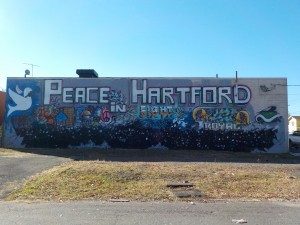
A federal judge ruled yesterday that a nonprofit group in Philadelphia’s effort to open a safe injection site where people can use drugs under medical supervision does not violate the federal crackhouse statutes prohibiting the operation of a space “for the purpose of manufacturing, distributing or using controlled substances.”
U.S. District Judge Gerald McHugh wrote: “The ultimate goal of Safehouse’s proposed operation is to reduce drug use, not facilitate it.”
The federal government has not only vowed to appeal, they have threatened to shut down anyone who attempts to open such a site. Deputy Attorney General Jeffrey Rosen said, “Any attempt to open illicit drug injection sites in other jurisdictions while this case is pending will continue to be met with immediate action by the department.”
Ten years back I would have thought a safe injection site was a foolish idea, but after witnessing the sorrow, devastation and death caused by the opioid epidemic, I have come to see these spaces as essential. The evidence from safe injection sites operated legally in countries around the world shows that they work in reducing death and the spread of disease as well as increasing the number of people getting into treatment. They are a common sense solution to a major problem. Today users in Hartford shoot up in public spaces, leaving drug paraphernalia (open needles) on the ground, and many of them die behind dumpsters, in public bathrooms and in their battered cars because they are found too late to be revived.
As Mark Jenkins of the Greater Hartford Harm Reduction Coalition often says, we have plenty of public drug consumption spaces in this city already today. The restrooms of McDonald’s, Subway, Burger King, the public library, not to mention sidewalks, alleys, and public parks are all commonly used to as public places to inject drugs. But these sites are far from safe for the user or the public.
A safe consumption space provides a clean environment where users not only get sterile supplies, they get counseling and access to social services. They are treated by people who care about them and recognize them as fellow human beings who are afflicted with a severe chronic disease. They are not stigmatized as scumbags and degenerates.
We can’t forget that nearly all of these people are trapped in a vicious addiction that often began through an injury or illness and a visit to their doctors. Their doctors prescribed them dangerously addictive medications that the pharmaceutical companies were making billions off of, while hiding their addictive dangers. Even those who began their drug use through experimentation don’t deserve the horror that addiction inflicts. If you take addicted opioid users and put them in an MRI, the imaging will show the damage done to their brains as surely as it will show the damage done to hearts injured by cardiac disease, or lungs by respiratory disease.
Heroin destroys and rewires the brain’s reward pathways. For many, the damage is so severe, recovery is not possible, all that can be hoped for is periods of remission. The job of harm reduction is to keep people alive and minimize the ill effects of their drug use. It is about being our brother’s keeper.
Judge rules Philadelphia supervised injection site does not violate federal law
Former Philadelphia mayor calls approval of safe-injection site ‘hugely important’
Peace to all.

